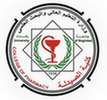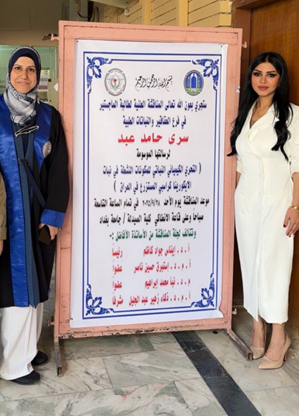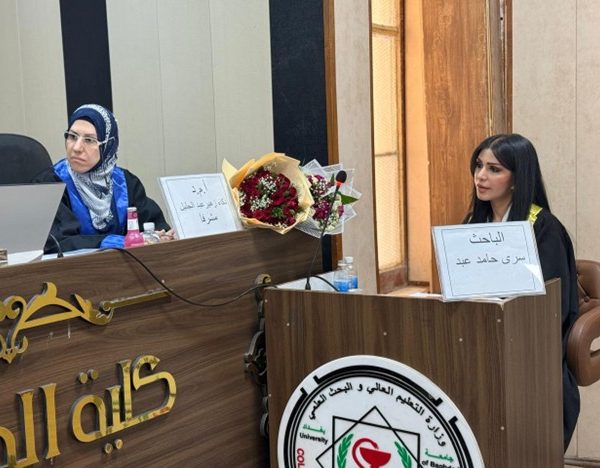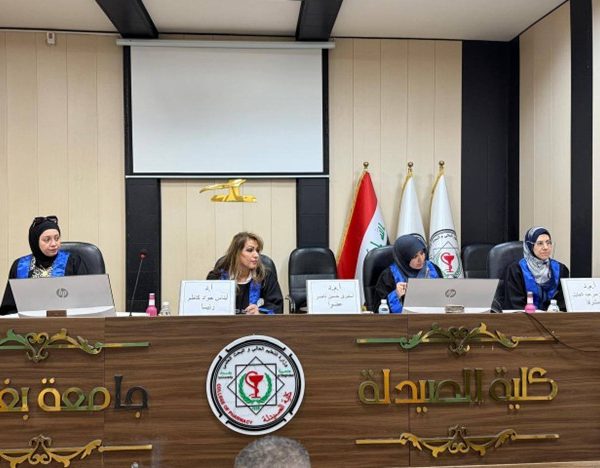The College of Pharmacy discussed the MSc thesis entitled “Phytochemical Investigation of Iraqi Eichhornia crassipes (Pontederiaceae) and Evaluation of its Cytotoxic Effect” by the student Sura hamid abid and the supervisor Assistant Professor Thukaa Zuhair abdul-jalil, at the Pharmacognosy and Medical Plants Department.
This study aimed to investigate the phytochemical constituents of Eichhornia crassipes wild-grown in Iraq and to evaluate the anticancer activity of a combined extract (E3 and E4) against the Iraqi human breast cancer cell line AMJ-13 (Ahmed Murtada Jabria, 2013), as no prior investigations have been conducted on this wild Iraqi species.
The study included subjecting the whole plant to sequential extraction using the Soxhlet method. Phytochemical screening of the various fractions was performed through chemical tests, thin-layer chromatography (TLC), and high-performance liquid chromatography (HPLC), while gas chromatography–mass spectrometry (GC–MS) was employed to analyze the n-hexane fraction. Compounds were subsequently isolated using a combination of techniques, including HPLC, preparative layer chromatography (PLC), and column chromatography. The isolated compounds were characterized and identified by multiple complementary methods, such as TLC, Fourier transform infrared (FTIR) spectroscopy, the spiking method, ultraviolet (UV) spectroscopy, proton nuclear magnetic resonance (^1H-NMR), high-performance thin-layer chromatography (HPTLC), and liquid chromatography–mass spectrometry (LC–MS). The anticancer activity of the combined extract (Em) was evaluated against the Iraqi breast cancer cell line AMJ-13 using the 3-[4,5-dimethylthiazol-2-yl]-2,5-diphenyl tetrazolium bromide (MTT) assay, a colorimetric method that measures cell proliferation based on the reduction of the tetrazolium component to insoluble formazan by mitochondrial enzymes.
The study concluded that the various extracts contained several bioactive compounds, including β-sitosterol, scopoletin, quercitrin, kaempferol, chlorogenic acid, luteolin, naringenin, p-coumaric acid, apigenin, and caffeic acid. Isolation of these compounds was achieved using a fraction collector coupled with high-performance liquid chromatography (HPLC), while an unknown compound was isolated via preparative layer chromatography (PLC). Evaluation of the anticancer activity revealed that the mixed extract exhibited a half-maximal inhibitory concentration (IC₅₀) of 127.5 µg/mL against the AMJ-13 breast cancer cell line.
The study recommended that the investigation of wild-grown Iraqi Eichhornia crassipes, a natural source rich in diverse phytochemicals, may open new avenues for exploring its pharmacological potential and pharmaceutical applications.
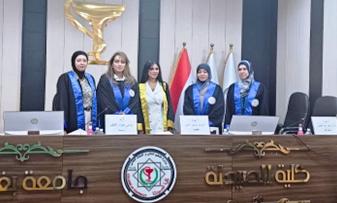
Comments are disabled.

